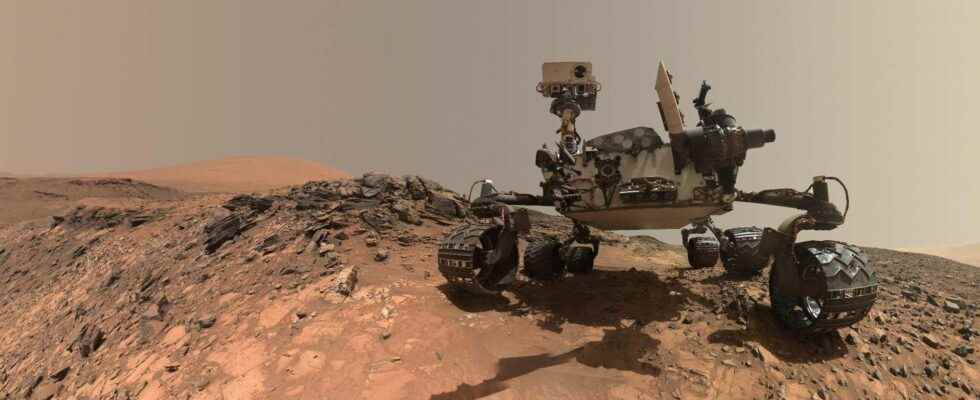You will also be interested
[EN VIDÉO] Curiosity: a year on Mars in two minutes Discover in this timelapse a year of Martian exploration in two minutes. Curiosity is at work: the rover rolls, digs… © NASA/JPL
While the venerable Curiosity rover has celebrated ten years on mars at the beginning of the month, it is about to receive a software update to allow it to go much faster, according to the magazine New Scientist. This is a long-planned improvement, but one that was delayed for years due to a bug.
No modifications will be made to the engine, which will not gain in power, and its speed maximum will remain the same. What changes is the navigation system, one of the most important systems for a device on another planet. Signals radio take between 4 and 24 minutes to cover the distance between Earth and Mars, which prevents any direct piloting. the rover must therefore be able to move independently.
The main concern is to ensure that it is in the intended place. It is not enough to program it so that it rolls for a given time at a given speed, then to calculate its new location. Just because the wheels have turned doesn’t mean the device has moved forward. It often happens that they slip in the sand Martian, distorting the calculations. In case of error, Curiosity cannot use a constellation of satellites GPS for orientation as is the case on Earth.
SAM can help us search for signs of past life on Mars!
The Sample Analysis at Mars (SAM) instrument on @MarsCuriosity helps scientists search for & measure organic chemicals & light elements that are important ingredients potentially associated with life! pic.twitter.com/LWkZm0nqcy
—NASA Goddard (@NASAGoddard) August 11, 2022
Movements punctuated by breaks
The rover uses a technique called visual odometry, which consists of taking pictures of your surroundings before moving forward a short distance. Then the camera stops, takes new photos, compares them to the first ones and calculates the actual displacement. It can thus immediately correct any positioning error. However, this method is quite slow since the device is frequently immobilized.
The update that will be sent to the rover will allow it to study the pictures as he advances. Thus, it will analyze the images of the first section of a movement while performing the second. It’s a little less precise, but it will save a lot of time. Its maximum speed is 120 meters per hour but, with the current visual odometry mode, it can only travel 45 meters in one hour. With the update, scientists hope it can reach 83.2 meters per hour.
An update planned for the beginning of next year
” Since the movement speed should be 50% faster on average, this will leave more power and time available for scientific observationsexplains Marc Maimone, one of the team members of the Nasa who pilots the rover. Another benefit is that as our mission continues into its second decade, levels ofenergy will slowly decrease and this new code will allow us to drive just as safely, even if it takes longer to recharge the batteries “.
The development of this update will have taken many years. The researchers started working on it in 2015, but discovered a bug when they tested their code on a rover on Earth. They failed to reproduce it in simulations and had to wait to do a more extensive new one in 2019 to finally find the cause of the problem. They then passed three years of testing it, with no room for error. The researchers will still have to wait a few more months to find out if their work has paid off, since the update will be rolled out early next year.
—
SPECIAL OFFER: subscribe to our media for 3 months and receive the Mag Futura as a gift!*
*Offer valid for any new 3-month subscription to the “I participate in the life of Futura” offer on Patreon.
—
Interested in what you just read?
